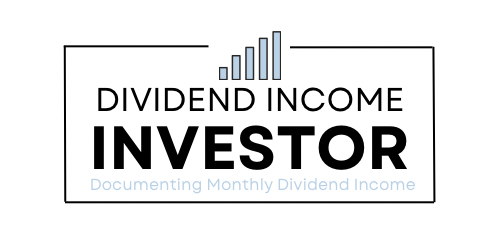Financial Planning Checklist: Six steps in the financial planning process. Learn how to set up your own financial plan in six steps.
The financial service industry would like you to believe that financial planning is a complicated process.
They use fancy terms and fancy suits to intimidate you. This is how they make you think they know what they are doing.
They want you to think that managing money is something that only experts can do.
In truth, personal financial planning is something anyone can do for themselves if they are willing to put in the time.
Of course, some professional services are valuable, such as lawyers and accountants. But most financial advisors are really just salespeople.
For taxes, estate planning, or insurance, it’s best to go to the experts.
When it comes to setting up a financial plan, though, this is something that you can do better yourself.
In this post, I will show you a financial planning checklist and go over the six steps in the financial planning process.
Let’s start with an overview of what a financial plan is.
Financial Planning Checklist

Financial Planning Checklist: What Is A Financial Plan?
Simply put, a financial plan is an overview of an individual’s long-term money objectives, personal financial situation, and strategy to reach their goals.
In other words, a financial plan is a business plan for an individual person.
The reason a financial plan is important is because it makes sure you are on track to meet your long-term objectives.
It can help you save for retirement, pursue financial independence, prepare for emergencies, save for a house, get out of debt, or just improve your current money situation.
Without a financial plan, it’s difficult to know if you are on track for retirement or where you stand financially. If you don’t have a plan, you are basically just coasting.
This is why it’s imperative that you create your own plan.
Fortunately, it’s not overly complicated to set it up. You just need to go through the following six steps in the financial planning checklist:

Step 1: Determine Your Financial Goals And Objectives
The first step on the financial planning checklist is determining your goals and objectives.
In this step, you should think about what age you want to retire, your ideal monthly spending in retirement, if you want to own a house, and what kind of lifestyle you want.
Although most experts recommend that you should assess your financial situation first, I believe you should set unbiased goals first.
If you are in a poor financial situation, you will be forced to set realistic goals that may not motivate you to continue.
In my opinion, it’s best to aspire for your most ideal situation first and then work backwards.
If you know what you want to aim for, and if it’s truly a life you want, you might find a way to make it work.
Alternatively, if you are deeply in debt, the second step of your financial plan will only be focussed on paying down debt.
So, determine your financial goals and objectives first, and then reverse engineer what you want.
Step 2: Assess Your Personal Financial Situation
The second step in the financial planning process looks at your situation in a more realistic way.
It’s like going to the dentist. You might not want to face it. But once you do, you will feel a lot better.
In this step, you need to gather all your financial information to know exactly where you stand.
You need to find out the exact amount of debt you owe, and you need to look at all your bank accounts to total up your assets. Figure out your net worth by subtracting your total assets from your liabilities.
In addition, you need to take a detailed look at your income and expenses. This way, you will know what you can afford and it will determine if you have the necessary cash flow to achieve your financial plan.
If your expenses are higher than your current income, you either need to make more money or lower your expenses.
Step 3: Decide On The Best Course Of Action Based On Your Objectives And Finances
Once you know your financial goals and you have assessed your financial situation, you can determine the best course of action.
If paying off debt is your priority, this means you will develop the best strategy for paying off debt. If you have multiple debts, you might want to focus on the highest interest rate first or the lowest balance of debt to get it out of the way.
Alternatively, if you have no debt, you can decide on what type of investor you want to become. Take the time to discover the right investment accounts and open them.
Depending on your investment timeframe and the amount of savings you have, figure out if growth stocks, defensive stocks, bitcoin, index investing, or another investment type makes sense for you. Do you want to be a do-it-yourself investor, or are you a passive investor that doesn’t want to analyze investments?
If you want a house, set a time frame and start thinking about where you want to live. Start researching and comparing the houses you want to narrow it down.
Step 4: Implement Your Strategy And Get Your Financial Plan Set Up
Step four is when you begin to put your plan into action.
In this step, you will develop a strategy for how you will pay off debt or save money.
Your accounts and investment/debt payoff strategy should be set up at this point. So, this is essentially where you decide how to manage your income.
If you get paid regularly, start paying yourself first to save money. Alternatively, figure out how much you can afford to put towards debt.
Start off with a low savings percentage that you are comfortable with and see how it goes. If you don’t miss the money, you can move the percentage up in six months’ time.
You have successfully completed this step when you follow through on it after you receive your first pay since setting up your plan.
Step 5: Follow Through With Your Plan Each Pay Day
Step five is about committing to your plan. You need to repeat step four every time income is deposited to your account.
If you don’t follow through, all the work you’ve done thus far has been for nothing.
Although this should be one of the easiest steps, it seems to be the most difficult step for most people.
Thinking about what you want to accomplish is exciting.
The first time you save is exciting.
But once the initial excitement wears off, you might realize how long of a journey you have ahead of you.
It might seem as though you’re not making much progress if you are investing with little money.
You might be tempted to compare yourself to others and think you’ll never be able to get there.
The key is to not think about any of that.
This is where you have to stick to your plan and appreciate the unique journey you are on.
You can rest assured knowing that you will eventually reach your goals, because you created a specific financial plan to get there. Your plan is guaranteed to work. It’s not based on hopes and dreams. It’s based on the financial planning checklist you completed.
Just stick to your plan and only compare yourself to your former self.
$100 will turn into $500. Then that will turn into $1,000. Soon enough, you’ll be looking at $5,000.
If you’re paying off debt, imagine the freedom you will have once you eliminate it. Each pay, you are one step closer.
Step 6: Reevaluate Your Plan Annually
Since your financial situation and goals may change from year to year, you must reevaluate annually.
This way, you will know if you are on track and you can analyze how your plan is going.
You will know if your plan needs to be tweaked.
Perhaps you received a raise during the year, or maybe you paid off one of your debts.
Regardless of what changed, it’s an opportunity to reevaluate and move closer to your goals.
To reach your financial goals faster, try to avoid lifestyle inflation and put the entire amount of your raises towards savings or debts.

Financial Planning Checklist – Final Thoughts
Now you know how to create your own basic financial plan.
By going through this simple six-step financial planning checklist, you know exactly where you stand and you understand what you want to accomplish.
Moreover, you created a plan of action to reach your goals and you put it in action.
At this point, all you have to do is follow through every time you get paid and reevaluate your plan annually.
Of course, it never hurts to seek help from a professional for investment advice, tax advice, estate planning, or insurance.
But when it comes to the financial planning process, this checklist has got you covered.
Now I’d like to hear from you. Did you create your own financial plan, or did you seek professional advice?
Related Articles On Personal Finance
How Much Emergency Fund Should I Have?
How To Increase Your Net Worth: 4 Steps To Follow And Repeat
I am not a licensed investment or tax adviser. All opinions are my own. This post may contain advertisements by Monumetric. This post may also contain internal links, affiliate links to BizBudding, Amazon, Bluehost, and Questrade, links to trusted external sites, and links to RTC social media accounts.
Connect with RTC
Twitter: @Reversethecrush
Pinterest: @reversethecrushblog
Instagram: @reversethecrush_
Facebook: @reversethecrushblog
Email: graham@reversethecrush.com


 How To Write An Anonymous Blog: 10 Proven Actions
How To Write An Anonymous Blog: 10 Proven Actions
